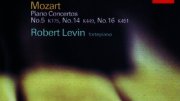The Harvard Dictionary of Music defined "improvisation" in 1969 as "[t]he art of performing music spontaneously, without the aid of manuscript, sketches, or memory...a phenomenon so evanescent that it defies documentation....This is true, at least, of the great days of improvisation, when masters such as Bach, Handel, Mozart, and Beethoven were as famous for their improvising as for their written compositions....However, the great art of improvisation has been lost, since it is no longer practiced by composers."
This would have been news to jazz greats--and great improvisers--alive at the time, like Duke Ellington, Stan Getz, Miles Davis, John Coltrane, and Bill Evans. But the definition gets to the heart of a strange double standard that persists in contemporary music: improvising by jazz musicians is routine, throwaway, and improvising by classical players is an "evanescent phenomenon," practically magic. Robinson professor of music Robert Levin '68 sees things differently. He's attempting to revive this "lost art" in classical music performances and for his recently released compact disc of Mozart piano concertos, his seventh, he improvises his own cadenzas and embellishments, as he has done on all previous discs in the series.
Asked why the tradition fell away in classical music, Levin says, "It's not taught; it's not valued. Our performing system has been geared toward perfection of execution and polish. Everything is worked out to an extraordinary luster. That produces consistency, but not necessarily creativity." In his Mozart concertos, Levin says, he wanted creativity and risktaking at the forefront of the performance. It was his conducting teacher, Hans Swarowsky, who first directed Levin to a Mozart recording by pianist and improviser Friedrich Gulda. "It's a famous, even notorious, recording," says Levin. "It was attacked by a lot of musicologists as completely irresponsible and so on and so forth." (Indeed, Levin says, Gulda now seems to have stopped improvising publicly.)
Levin may be having an easier time with musicologists, being one himself. As a former student of Nadia Boulanger's and a professor at Harvard, his academic credentials are well established (see page 38 and "Musician with a Mission," May-June 1995, page 32). Given that he has also completed countless Mozart fragments, including the Requiem, and performs music of composers from Haydn to Harbison, Levin may be uniquely suited to popularizing classical improvisation again.
"My feeling," he says, "is that the greatest benefit to me in [learning to improvise] is not what happens in the two or three minutes of the cadenzas, but what happens in the rest of the piece." This is borne out not only in Levin's most recent disc, but throughout his Mozart series, which shows all the positive effects of having set himself the task of understanding Mozart fully. His interpretations' most attractive qualities are the momentum each generates, the full pleasure Levin takes in Mozart's jokes, note patterns, and effects, and the confidence he has in Mozart's compositional choices.
In the end, though, the most significant way that Levin's interpretations differ from others' is that he improvises. How well does he do it? Frankly, it's hard to tell. The only points of comparison are cadenzas that have been written out (an unfair standard), Gulda's one recording (now out of print), and Levin's own improvisatory work in the other concertos on the disc and in the series. In this last regard, the most spectacular solo comes in the first movement of Concerto No. 5, most of which was written in 1773. The solo weaves the first and second themes back and forth between the left and right hands, Levin's virtuosic fingers race maniacally up and down the keyboard, and he revels in some roiling, turbid harmonies in the bass register. Compared to this cadenza, his improvised sections in the concerto's last movement, a rollicking Rondo that Mozart added in 1782, delay too much in moving from one idea to the next, creating large spaces that feel a bit purposeless. There isn't much room to solo in the last two movements of Concerto No. 14, but the opening movement's cadenza is pleasing. The most sophisticated solo on the disc occurs in the first movement of Concerto No. 16: here, Levin emphasizes the niceties of texture and touch, bringing out the sensitive side of the fortepiano, which is more easily played percussively.
What's striking is that Levin improvises at all. Though he agrees that improvisation could be considered a logical extension of the values of the early music movement, he emphasizes that all performances are valid, just different. His hope for improvisation, though, is pointed. As he writes in the liner notes to this disc: "When improvisation regains its former position at the centre of Classical music-making, perhaps the gap between composer and performer, between old and new music, between vernacular and art music, and between Classical performer and audience will narrow."






